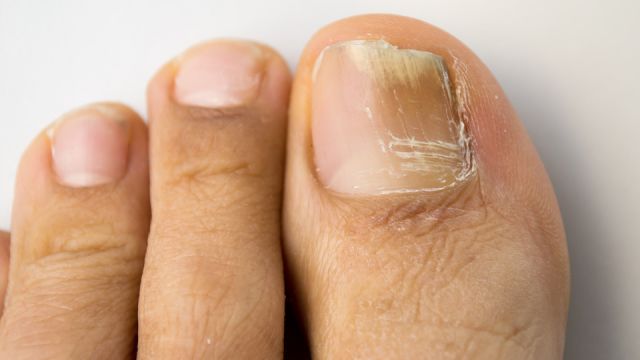
Most likely, toenail fungus isn’t high on your list of health concerns. You are probably more worried about severe, life-altering conditions such as heart disease, cancer, and diabetes, which is understandable. However, small, everyday issues can build up and impact your life in surprising ways. One of those issues is toenail fungus, a painless (at first), yellow discoloration of your toenail. Seems pretty insignificant, right? In reality, this easy-to-ignore cosmetic issue can become harmful if left untreated. Here is a look at what happens if you ignore this fungus and at-home remedies for keeping it at bay.
What causes toenail fungus?
We rarely think about our feet. Our poor, overworked, under-loved feet. Sometimes, this neglect can seriously come back to bite when nasty fungal infections start to develop. Because your feet are so easily ignored, you probably don’t put a lot of effort into drying them after you shower. This, combined with sweaty feet in non-breathable shoes, is the perfect environment for nasty, fungal bacterial. Different kinds of fungi or yeast can enter through cracks in your nail or cuts in your skin, and usually, they stick around.
This issue can develop independently in a moist environment, but it can also be picked up from walking barefoot around shared showers or locker rooms since this fungus (onychomycosis) is contagious. You can even get it from pools, jacuzzis, or nail salons that don’t properly clean their equipment.
What happens
At first, you may notice a slight discoloration on the nail. This will usually progress and cause your nail to thicken. Over time, this thickening can lead to deformed nails that become ingrown and contribute to foot pain and difficulty walking. Since foot fungus is so often ignored, many simple cases that could have been treated easily, become severe, painful issues.
The fungus may also spread to other parts of the foot, becoming a common condition known as athletes’ feet. This condition causes red, peeling, itchy, cracked skin, which is irritating and uncomfortable. Athletes foot is not just a minor inconvenience, however. Bacteria entering into the cracks of the skin could lead to cellulitis in those with diabetes or a weakened immune system. Cellulitis is an infection that produces swollen, red, tender skin and can only be treated through the use of antibiotics.
Severe cases of onychomycosis may lead to the toenail falling off or needing to be removed if the condition isn’t remedied through less extreme measures. This can cause pain following surgery and serious cosmetic issues that may lead to insecurity and embarrassment when wearing open-toed shoes. If you want to let your feet breathe in the summer without having to worry about misshapen or missing toenails, look after your feet and don’t let toenail fungus go untreated.
When to see a doctor
Not all toenail fungus will spread and become a serious issue. In many cases, it is just a simple spot of yellow on your toenail. If it isn’t causing any pain and you are carefully monitoring it to make sure it doesn’t spread, there is usually no need to see a doctor. However, keep in mind that this fungus will not go away on its own and will be contagious as long as you have it; therefore, a treatment plan of some sort is highly recommended.
Make an appointment with your healthcare provider if you have underlying concerns or notice that the fungus is spreading.
Ways to prevent toenail fungus
- Change socks and shoes regularly. Socks may need to be changed twice a day if your feet sweat a lot.
- Dry feet as soon as possible after exposure to water. Make sure to get in between your toes.
- Files your nails and keep the edges smooth to prevent ingrown toenails.
- Select shoes and socks made of natural materials, like cotton
- Alternate which shoes you wear so that you don’t wear the same pair every day
- Treat skin infections like athlete’s foot promptly to avoid the infection reaching the nails
- Trim nails regularly and inspect them for any signs of fungus
- Use separate scissors or clippers to tend to infected nails to avoid spreading the infection to other nails
- Wear clean, breathable, comfortable shoes
Remedies for toenail fungus
Prescription-strength oral and topical remedies are available to treat toenail fungus. However, these drugs, particularly oral medication, can cause side effects such as nausea and headaches and interfere with other prescription medications. Instead of leaping to pharmaceutical solutions, try these easy, natural remedies from the comfort of your own home.
- Baking soda
- Vinegar
- Garlic
- Snakeroot extract
- Mouthwash
